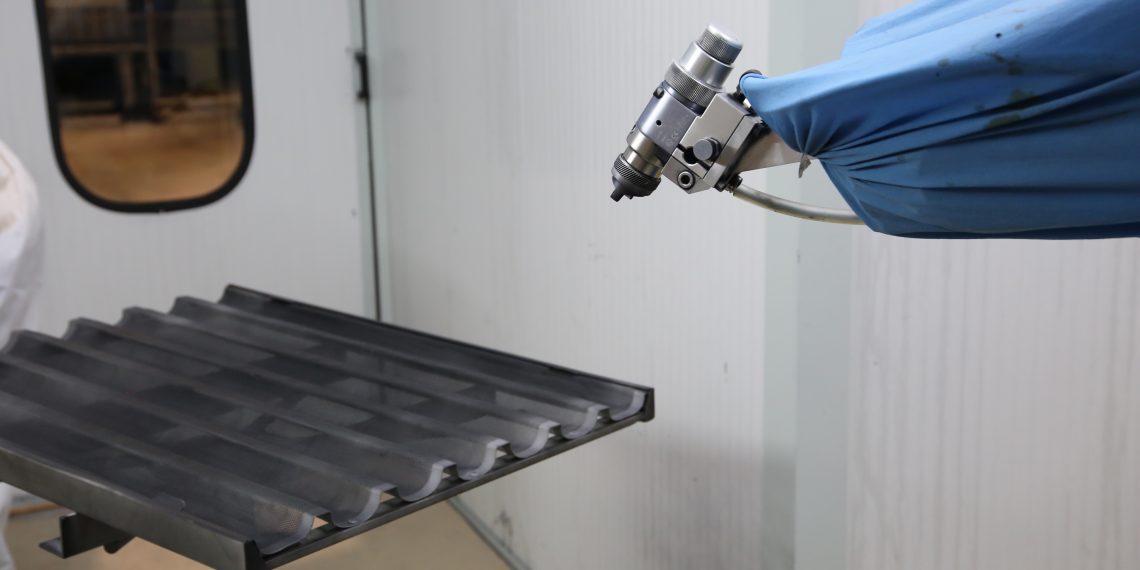The development of the first collaborative robotic cell in the advanced coating applications sector will be main outcome of the SAFECoating project – Safety Enhanced Collaborative Robotic Coating Cell.
INESC TEC’s Centre for Robotics in Industry and Intelligent Systems (CRIIS) is the coordinator of the project – developed in partnership with FLUPOL Surface Engineering SA, a Portuguese engineering SME specialised in the application of coating on the surface of machine parts.
The SAFECoating project was inspired by two previous R&D projects, SIIARI and HORSE FLEXCoating, where the concept of collaborative coating cell was initially prototyped.
FLUPOL is a global competitor in the coating application industry, offering highly personalised solutions and processes designed to meet exclusive requests, thus promoting its competitiveness in the current market.
The SIIARI project focused on the introduction of industrial manipulators capable of accurately emulating the manoeuvres of highly qualified technical staff, which increased FLUPOL’s productivity and competitive advantage. The set of prototyped technologies developed throughout the HORSE FLEXCoating project also led to a significant improvement in production and flexibility. The recognition and location of 3D-based objects and the introduction of a PILZ SafetyEYE sensor are fine examples of said technologies.
The company is already exploring the results of previous R&D projects (SIIARI and HORSE FLEXCoating), namely the design of the robotic coating cell (despite not being fully collaborative). The cell’s current version already includes the innovative technological specifications from previous endeavours, such as robot programming by demonstration and an advanced robotic perception system.
In order to establish a fully collaborative behaviour and to implement an industrial prototype, it is crucial to carry out a general safety assessment of the actual operational scenario at FLUPOPL, made possible by SAFECoating. It’s important to mention that past initiatives did not foresee any safety assessment procedure nor certification processes.
Hence, the project includes a thorough safety assessment process, based on the protocols, tools, standards and safety guidelines of the COVR. This procedure will focus on collaborative painting and coating applications. In addition, the team will also compare and evaluate different safety strategies and sensor groupings.
SAFECoating will benefit from COVR’s expertise and tools to assess, validate and improve security features. Consequently, this new collaborative coating cell prototype may operate in compliance with safety standards and regulations.
INESC TEC will have the opportunity to improve the current knowledge on standards, guidelines and cutting-edge security solutions used in industrial robotic applications. In addition, the Institute will capitalise on previous R&D projects and effectively implement the collaborative industrial prototype at FLUPOL.
Concerning COVR, SAFECoating will set a new and exclusive industrial scenario, where collaboration between highly qualified operators and industrial robots is crucial to the success of the different complex coating operations, keeping in mind the maximum time established for each operation cycle.
INESC TEC’s researchers Rafael Arrais, Luís Rocha, Germano Veiga, Manuel Silva and Carlos Costa (CRIIS) are part of the project’s team.
This project is funded by the EU Horizon 2020 Programme (H2020) and by the Open Call of the COVR project, with a total of 90 thousand euros allocated. The SAFECoating project began on March 15 and will run for nine months, ending on December 15 2020.
The INESC TEC researchers mentioned in thoiis news piece are associated with INESC TEC, UP-FEUP and P.Porto-ISEP.




 News, current topics, curiosities and so much more about INESC TEC and its community!
News, current topics, curiosities and so much more about INESC TEC and its community!